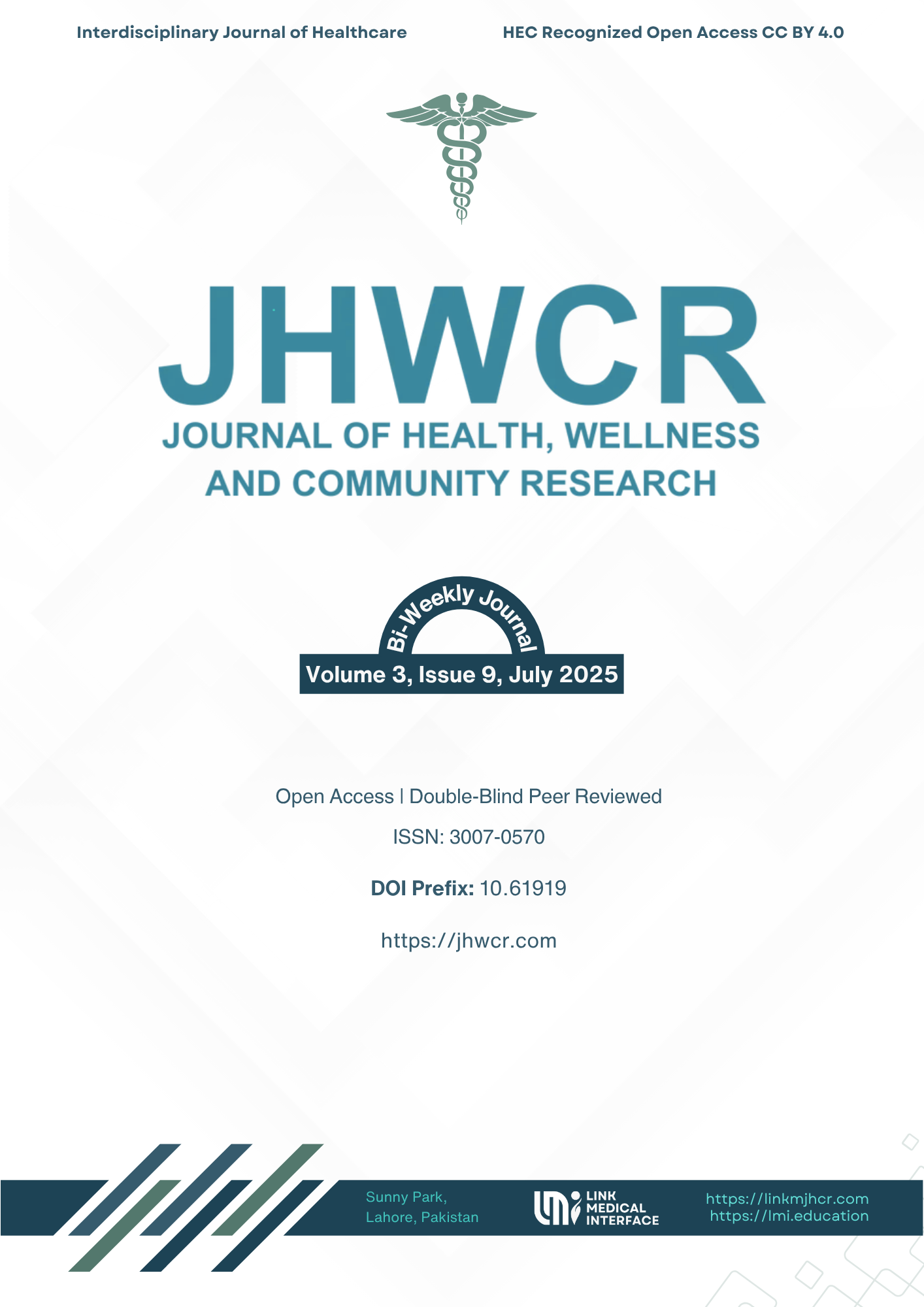Investigating the Association of Blackboard Teaching with Scapular Dyskinesia and Shoulder Pain Among School Teachers in Karachi, Pakistan
DOI:
https://doi.org/10.61919/ecz0fp37Keywords:
Blackboard teaching, scapular dyskinesia, shoulder pain, musculoskeletal disorders, occupational health, teachers, Karachi, SPADI, LSSTAbstract
Background: Musculoskeletal disorders (MSDs) represent a significant occupational health burden globally, with teachers frequently reporting shoulder pain due to repetitive overhead tasks such as blackboard writing. Scapular dyskinesia, characterized by altered scapular positioning, is increasingly recognized as a contributor to shoulder dysfunction, yet data from Pakistan remain limited. Objective: To investigate the association between blackboard teaching and the prevalence of scapular dyskinesia and shoulder pain among female school teachers in Karachi, Pakistan. Methods: A cross-sectional observational study was conducted over six months in six schools in Karachi, enrolling 56 female teachers aged 20–45 years with at least two years of teaching experience and a minimum of two hours per week of blackboard instruction. Data collection included the Shoulder Pain and Disability Index (SPADI) for assessing pain and disability, and the Lateral Scapular Slide Test (LSST) for measuring scapular asymmetry. Ordinal logistic regression was used to identify predictors of pain severity, adjusting for age, teaching experience, and shoulder pain duration. Results: Moderate shoulder pain was prevalent (mean SPADI pain at worst: 3.70, SD = 2.87). Greater scapular asymmetry, particularly >1 cm, significantly predicted higher pain severity (OR = 0.28, p = 0.025). Disability burden increased with pain chronicity and was highest among teachers with greater asymmetry. Age and teaching experience were not significant predictors. Conclusion: Blackboard teaching contributes to shoulder pain and scapular dyskinesia among female teachers in Karachi, with scapular asymmetry independently associated with higher disability burden. Ergonomic interventions and targeted rehabilitation are warranted to reduce occupational MSD risk.
Downloads
Published
Issue
Section
License
Copyright (c) 2025 Mariam Khalid, Maira Muneer, Okasha Anjum (Author)

This work is licensed under a Creative Commons Attribution 4.0 International License.


